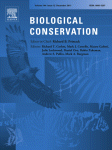A framework for integrating biodiversity concerns into national REDD+ programmes
Summary
The UNFCCC mechanism for Reducing Emissions from Deforestation and Degradation in developing countries (REDD+) represents an unprecedented opportunity for the conservation of forest biodiversity. Nevertheless, there are widespread concerns surrounding the possibility of negative environmental outcomes if biodiversity is not given adequate consideration throughout the REDD+ process. We propose a general framework for incorporating biodiversity concerns into national REDD+ programmes based on well-established ecological principles and experiences. First, we identify how biodiversity distribution and threat data, together with data on biodiversity responses to forest change and management, can be readily incorporated into the strategic planning process for REDD+ in order to identify priority areas and activities for investment that will deliver returns for both carbon and biodiversity. Second, we propose that assessments of changes in biodiversity following REDD+ implementation could be greatly facilitated by paralleling, where possible, the existing IPCC architecture for assessing carbon emissions. A three-tiered approach is proposed for biodiversity assessment, where lower tiers can provide a realistic starting point for countries with fewer data and lower technical capacities. Planning and assessment of biodiversity safeguards for REDD+ need not overburden an already encumbered UNFCCC process. Immediate progress is already possible for a large number of developing countries, and a gradual, phased approach to implementation would minimise risks and facilitate the protection of additional biodiversity benefits from REDD+ activities. Greater levels of coordination between the UNFCCC and CBD, as well as other agencies and stakeholder groups interested in forest conservation are needed if biodiversity safeguards are to be fully adopted and implemented.

 Twitter
Twitter Google+
Google+ Facebook
Facebook LinkedIn
LinkedIn Digg
Digg del.icio.us
del.icio.us StumbleUpon
StumbleUpon
 A project of the
A project of the